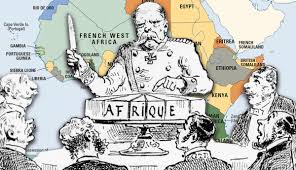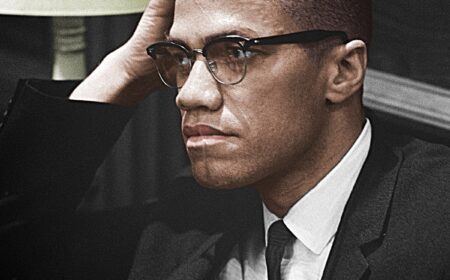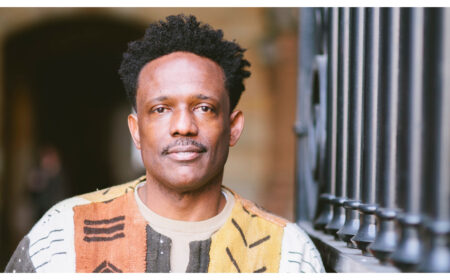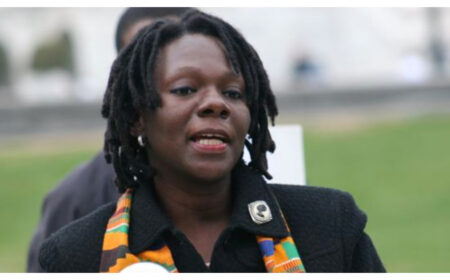Once numbering more than 50, 13 historically black towns in Oklahoma are struggling to survive.

African-American women wait outside a rural church while other members of their families attend a church business meeting in McIntosh County, Oklahoma, in 1939. (Smith Collection, New York Public Library/Gado/Getty Images)
TULSA, Okla. (AP) — His baby brother, barely a year old, came down with pneumonia in September 1948, when Lonnie Cato’s family still lived in the historically black community of Vernon, 70 miles south of Tulsa. The streets, even in the middle of town, were still gravel back then, but Vernon seemed to be thriving with 2,500 residents, two or three general stores and a couple of cafes, where blacks, whites and Native Americans all mingled without seeming to notice skin color. Or, at least, not caring much about it.
Everybody, including Cato’s family, was poor. But they didn’t seem to notice that, either.
“Vernon was a happy-going, barefooted, sand-between-your-toes kind of place,” Cato remembers. “Shoes was a luxury. We only wore them on Sundays when we went to church.”
The town didn’t have a doctor. And by the time Cato’s family got his little brother to a hospital in Tulsa, it was too late. The baby died. And for Cato’s father, that was the end of Vernon.
“I’m not going to raise my kids where there’s no doctor care,” he told the family. And they moved to Tulsa.
Cato was too young to notice, of course. But his family was part of a much larger trend that started after World War II and continued for several decades, a mass exodus away from small towns in general and historically black towns in particular, leaving their populations gutted. The general stores closed. The cafes vanished. Houses fell into disrepair and entire neighborhoods turned into vacant lots, old foundations overgrown by weeds.
“We have to do something or these historically black towns will die,” said Cato, now 77 years old. “And I think there’s too much history to just stand back and let that happen.”
In hindsight, World War II was the turning point, Cato said. An entire generation of young men went off to fight and even the survivors never came back to Vernon, where they would’ve spent their lives behind a plow on a cotton farm.
“I didn’t want to look a mule in the butt anymore,” an uncle told Cato after settling in Kansas City after the war.
While growing up in Tulsa, where he graduated from Booker T. Washington High School in 1959, Cato often went back to Vernon, taking a two-hour bus ride to visit grandparents and cousins. The town shrunk smaller with each visit. And by the time he came home from Vietnam, where he served in the Air Force during the early 1960s, Vernon seemed barely recognizable.
“Young people kept leaving until only the old folks were left,” he said. “And as they died off, the town was dying, too.”
With no local businesses left to collect sales taxes, one of Cato’s uncles launched the Vernon Charitable Foundation in 1973 to collect donations from people who had moved away, helping to pay for the town’s upkeep. But that source of funding dwindled as former residents died off and their children, who had no memories of town, saw no reason to contribute.
By 2005, the Vernon Charitable Foundation decided to change tactics and, instead of going after donations, go after grant money. But for that, the town needed an elected mayor, an office that had never been filled, even during the community’s heyday.
Cato had just retired from American Airlines, where he was a mechanic.
“I guess I’m going to have some time on my hands,” he told the foundation, agreeing to be a candidate. In fact, the only candidate.
He has since been re-elected three times, with McIntosh County allowing him to continue living on six acres near Skiatook as long as he owns property in Vernon and is registered to vote there, Tulsa World reported. And he can point to several accomplishments, including preservation work on the old Vernon School, which is now a community center, and the town’s first-ever paved road.
Vernon, if not exactly revitalizing under Cato’s leadership, has survived. And that’s all Cato really hoped for.
“But I’m not going to be around forever,” he said. “Somebody will have to take over.”
Getting ready for bed one night last September, Cato noticed blood on his toothbrush.
“I must have damaged my gums while brushing,” he thought, and shrugged it off. But he woke up later to find blood soaking into his pillow.
A visit to the emergency room at 2 a.m. led to surgery on his mouth, which led to a diagnosis of head and neck cancer, leading eventually to surgery at the Cancer Treatment Centers of America.
Now in remission, he still has trouble chewing and swallowing, while he has lost nearly all sense of taste.
“I’ll trade taste for life any day,” he said with a laugh. “So it’s OK. I’m doing fine.”
But the health scare has convinced him not to run for re-election again in 2020, leaving Vernon – with a current population of exactly 37 people – to look for a new mayor.
Oklahoma used to have more than 50 all-black towns, established largely by freedman families who had come to Indian Territory with tribal slave owners in the early 19th century. All but 13 of those towns have vanished, and now they’re struggling to survive.
“It would be a travesty to let them die,” said Jessilyn Head, part of a husband-wife team from Oklahoma City who head up The Coltrane Group, an organization devoted to saving Oklahoma’s remaining historic black towns. “There’s too much history and heritage that would be lost forever.”
Too small and under-funded to thrive individually, the 13 towns need to work together to promote awareness and tourism, Head said. Most of the towns have at least one annual event that could attract crowds – Vernon, for example, has a Memorial Day celebration that serves as a kind of town reunion, drawing former residents from all over the country. Anyone with an interest in black history should pay a visit, too, Head said.
“But people don’t know about these towns,” she said. “That’s one thing we have to fix.”
The Coltrane Group is working with state officials to post highway signs to help travelers find historic black towns, and the group is building a new website that will promote tourism to the towns, she said.
“Slowly but surely we’re seeing interest start to grow,” she said. “It’s not going to happen overnight, maybe not even in our lifetimes, but these towns can be rebuilt and revitalized.”
Cato doesn’t have much hope for Vernon to grow. In fact, he doesn’t have any hope for that.
“It will never be any bigger,” he said. “That’s for sure.”
He’d be satisfied with mere survival.
“What’s left of this town,” he said, “should be held together so people will know how things used to be.”
READ MORE AT: https://www.usnews.com/news/healthiest-communities/articles/2018-04-09/mayor-hopes-to-preserve-oklahoma-historic-black-town







